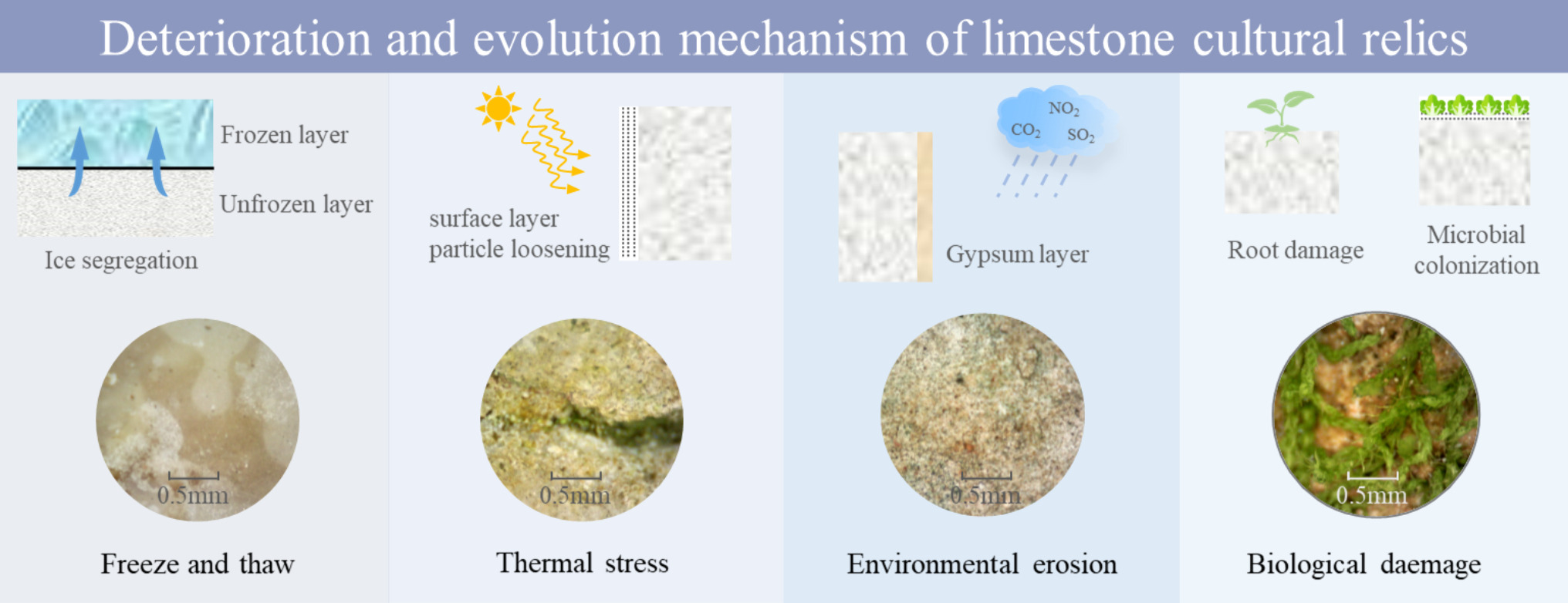https://doi.org/10.1140/epjp/s13360-025-06546-z
Regular Article
Performance evolution and deterioration mechanisms of limestone cultural relics in China’s West Lake World Heritage based on smart monitoring technology
1
Department of Chemistry, Zhejiang University, Hangzhou, People’s Republic of China
2
Department of Cultural Heritage and Museology, Zhejiang University, Hangzhou, People’s Republic of China
3
Hangzhou West Lake World Cultural Heritage Monitoring and Management Center, Hangzhou, People’s Republic of China
Received:
13
February
2025
Accepted:
9
June
2025
Published online:
27
June
2025
To understand the impact of environmental and anthropogenic factors on the deterioration rate of the West Lake Cultural Heritage artifacts, a non-destructive or minimally invasive smart monitoring technology has been implemented. This included an extensive eight-year health monitoring study of the stone cultural heritage sites at the Feilai Peak 98 niches grotto and the Lingyin Temple pagoda. The research primarily focused on changes in the artifacts’ strength properties, hydrodynamic characteristics, and the stability of their surface structure, with a special emphasis on various pathological issues. From 2016 to 2023, monitoring data showed a declining trend in Shore hardness (SH) and ultrasonic wave speed (WS) for both the grotto and pagoda. Concurrently, their surface roughness increased, indicating significant rock deterioration. Additionally, microwave-based humidity detection identified the highest moisture levels at a depth of 3 cm within the rock, with moisture levels decreasing at greater depths, notably at a critical vapor exchange interface at 11 cm. Analysis of the comprehensive eight-year monitoring data suggests that the deterioration of the rock is primarily due to a combination of weathering factors, including freeze–thaw cycles, thermal stress impacts, and biological erosion. This monitoring study provides foundational data for exploring preventive conservation measures for World Cultural Heritage sites.
Copyright comment Springer Nature or its licensor (e.g. a society or other partner) holds exclusive rights to this article under a publishing agreement with the author(s) or other rightsholder(s); author self-archiving of the accepted manuscript version of this article is solely governed by the terms of such publishing agreement and applicable law.
© The Author(s), under exclusive licence to Società Italiana di Fisica and Springer-Verlag GmbH Germany, part of Springer Nature 2025
Springer Nature or its licensor (e.g. a society or other partner) holds exclusive rights to this article under a publishing agreement with the author(s) or other rightsholder(s); author self-archiving of the accepted manuscript version of this article is solely governed by the terms of such publishing agreement and applicable law.





